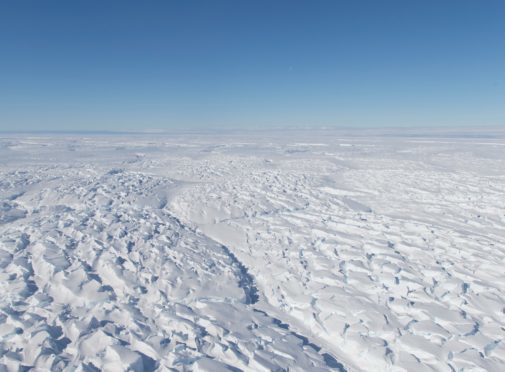St Andrews University is leading research into the collapse of a massive Antarctic glacier.
Academics fear the loss of the Thwaites Glacier, which is the size of the UK and is already melting in response to climate change, could lead to a dramatic rise in sea levels accompanied by severe weather events including storm surges and hurricanes.
Overseeing the DOMINOS (Disintegration of Marine Ice Sheets Using Novel Optimised Simulations) project is Professor Doug Benn from St Andrews.
The team will use computer modelling to examine how the break-up of the glacier could increase the rate of ice flow into the ocean.
Professor Benn said: “The Thwaites Glacier is the Achilles heel of the Antarctic ice-sheet. It is particularly sensitive and indications are that the process of collapse has already begun.
“The glacier has been thinning and speeding up due to increased melting beneath its floating tongue.
“Our concern is that breakup of the ice tongue could greatly accelerate the rate of ice loss in the near future, with a big impact on sea level.”
The Thwaites Glacier in West Antarctica holds enough water to raise the global sea level by 40cm, but its collapse would destabilise other parts of the ice sheet, leading to a potential sea level rise of more than three metres.
Prof Benn added: “A rise of one metre in sea levels would mean a greater frequency of coastal flooding during extreme weather events, such as storm surges, hurricanes, and when big river flows coincide with high tides.”
Researchers at St Andrews have won two major grants of £438,000 and £540,000 from NERC (Natural Environment Research Council) as part of the International Thwaites Glacier Collaboration.
A joint venture between the UK and the US, the collaboration launched on Monday is a research programme involving eight projects and is worth £20 million.
Professor Benn will collaborate with scientists at the University of Michigan, the IT Center for Science in Helsinki and the University of Swansea.
Meanwhile, St Andrews biology lecturer Dr Lars Boehme, who is also based at the university’s Sea Mammal Research Unit, will be part of the TARSAN (Thwaites-Amundsen Regional Survey and Network) project led by Karen Heywood from the University of East Anglia and Erin Pettit from the University of Alaska Fairbanks.
The TARSAN team will measure the oceanic heat in front of the glacier by attaching sensors to seals.
Dr Boehme said: “These tiny sensors, which are temporarily glued to the animals’ fur and fall off during moulting, will allow us to collect essential oceanographic observations during the winter time, as well as providing a better indication of how vulnerable the seals might be to climate change.”










